Eucalyptus radiata
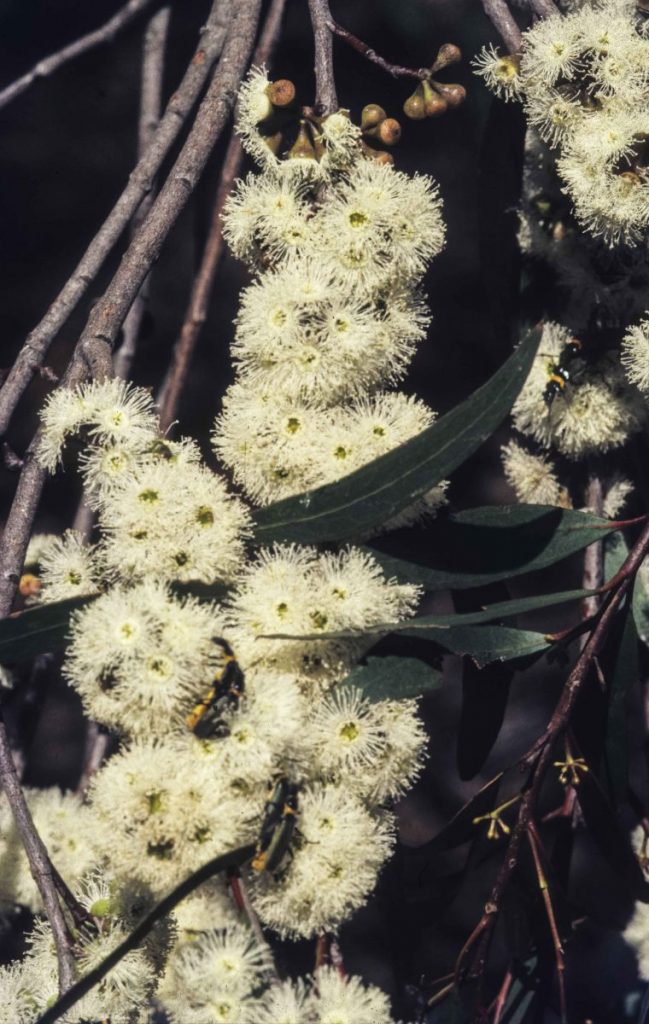
Eucalyptus radiata – A tree, growing to a height of 50 m in forest and woodland. Usually found in cooler or wetter habitats in New South Wales, south from near or just over the Queensland border, along the tablelands / and highlands of the coastal areas, to the Wombat State Forest and Great Otway National Park and ranges of South Gippsland in Victoria and into central Victoria.
Eucalyptus quadrangulata
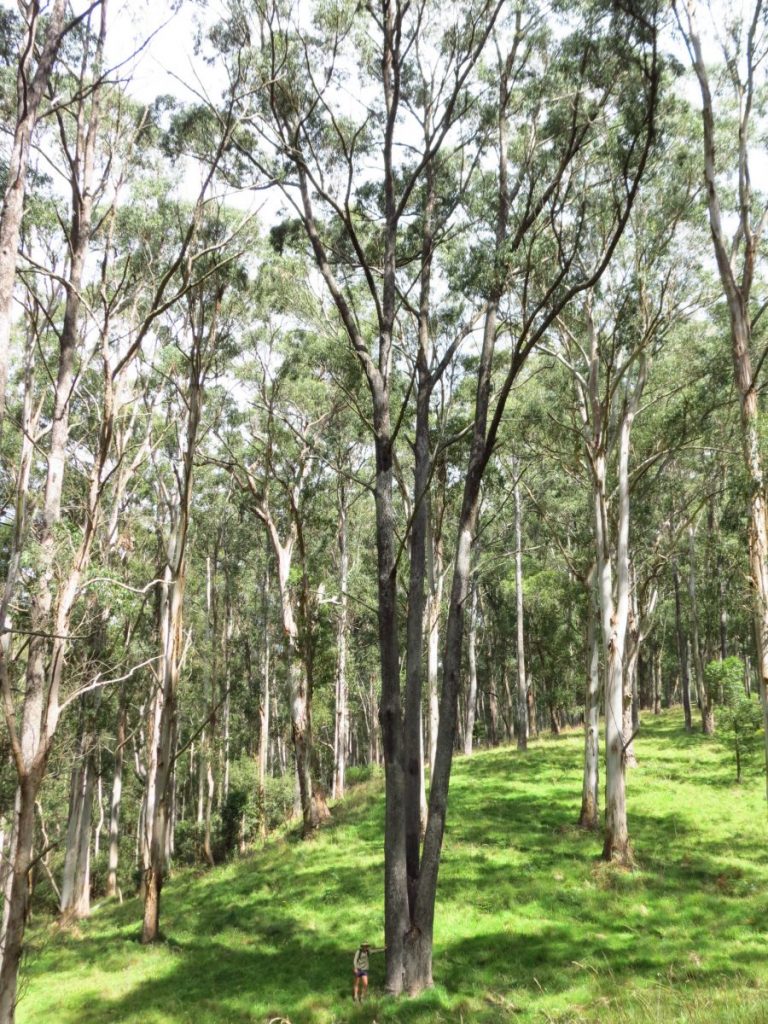
Eucalyptus quadrangulata – A large tree, growing to a height of 45 to 50 m, forming a lignotuber. Found on the slopes and edges on the eastern side of the Northern and Central Tablelands in New South Wales, between Dorrigo and Scone in the north to Bundanoon and Milton in the south.
Eucalyptus resinifera
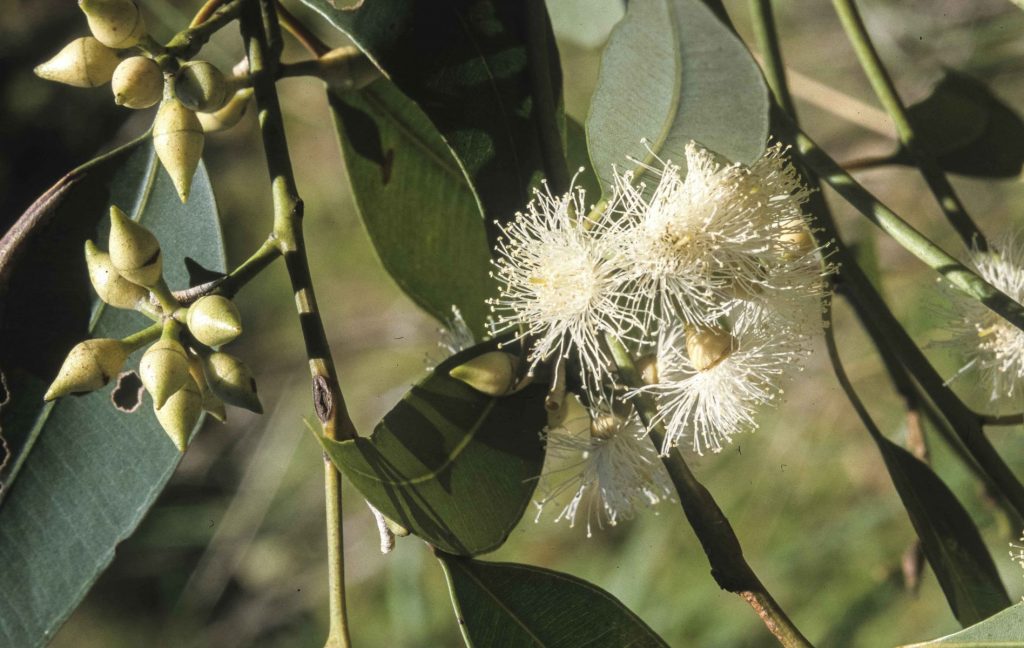
Eucalyptus resinifera – A tree, growing to 45 m high, forming a lignotuber. It is found in coastal areas from Nowra in New South Wales to Gladstone in Queensland. It grows in forest on flats, valleys and gentle slopes, preferring soils of medium to high fertility but is also found on sandstone, especially in Sydney.
Eucalyptus saligna

Eucalyptus saligna – A large tree that can become a giant, growing to 60 m tall and forms a lignotuber. Found in areas which receive between 800 to 1200 mm of rainfall, on either clay-loams or soils of volcanic origin, within 120 km of the coastline. Grows to as far south as Port Jackson, north along the coast to Maryborough in central Queensland. Then there are disjunct populations further north up to Cairns. It does form an integral part of the endangered blue gum high forest ecological community in the Sydney region.
Eucalyptus punctata
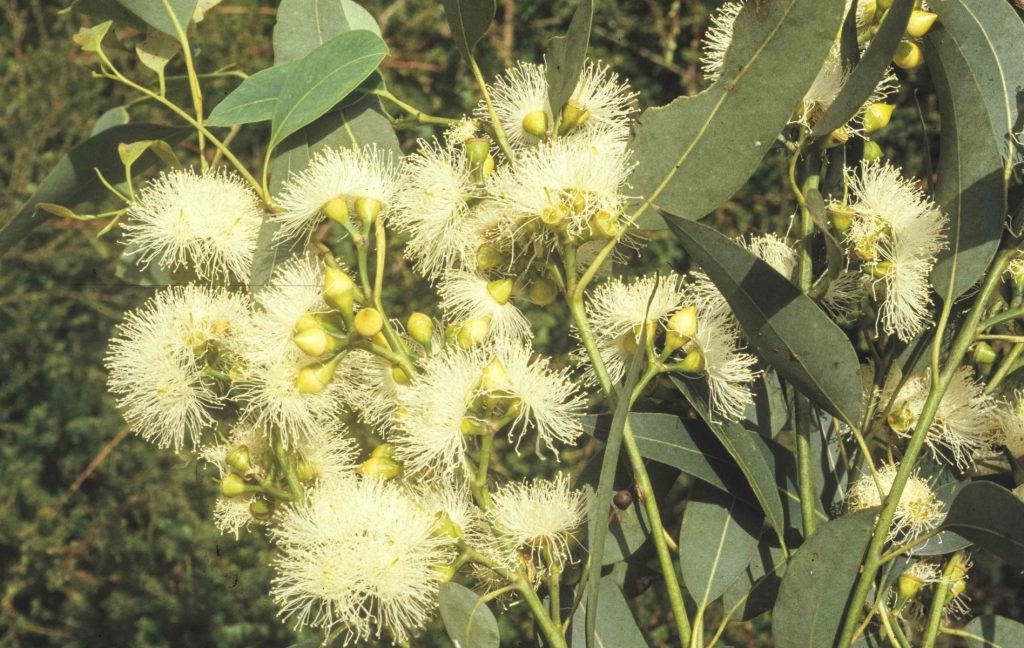
Eucalyptus punctata – A large tree, growing to a height of 35 m, with a lignotuber. It is a gum – meaning it has smooth-bark for all of its length. The bark can display vivid shades of grey, white and salmon-orange at different times of the year. It occurs through the ranges and near coastal areas from near Gympie in Queensland, to near Nowra in New South Wales, most commonly on transition zone soil types between sandstone and shale, mainly on the coast and tablelands, extending into the western slopes.
Eucalyptus racemosa
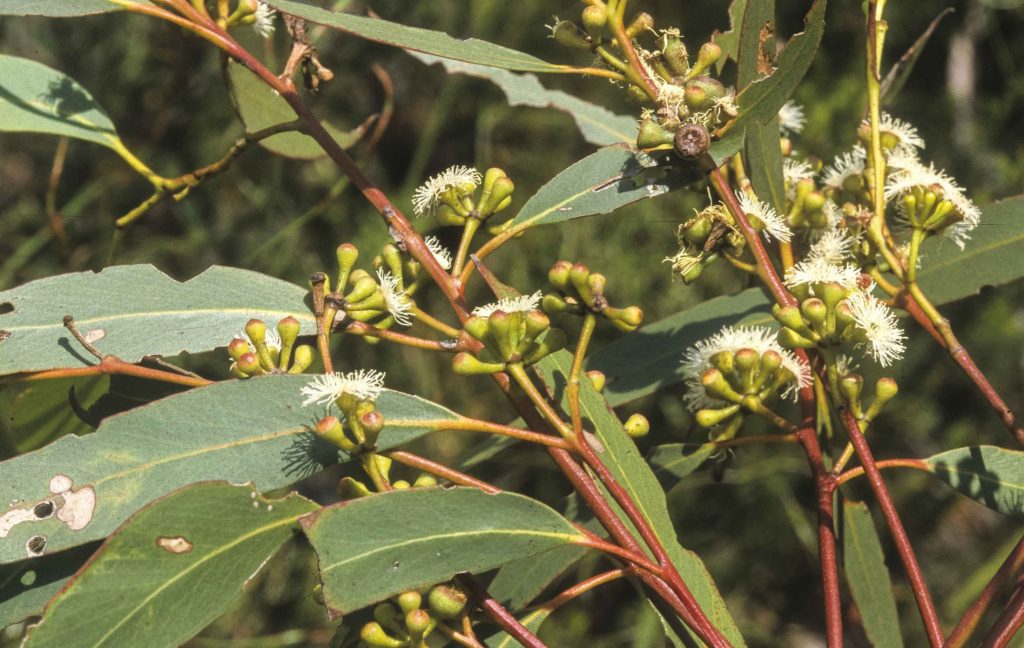
Eucalyptus racemosa – A tree, growing to 20 m, forming a lignotuber. It grows in woodland and forest, sometimes in pure stands, on poor sandstone and sandy soils, in mid to high rainfall areas. It is found along the coast, tablelands and western slopes in NSW, from Bombala, extending north-west to Bathurst and west to Canberra (ACT), north to Gympie and Bundaberg in south-eastern Queensland.
Claoxylon australe
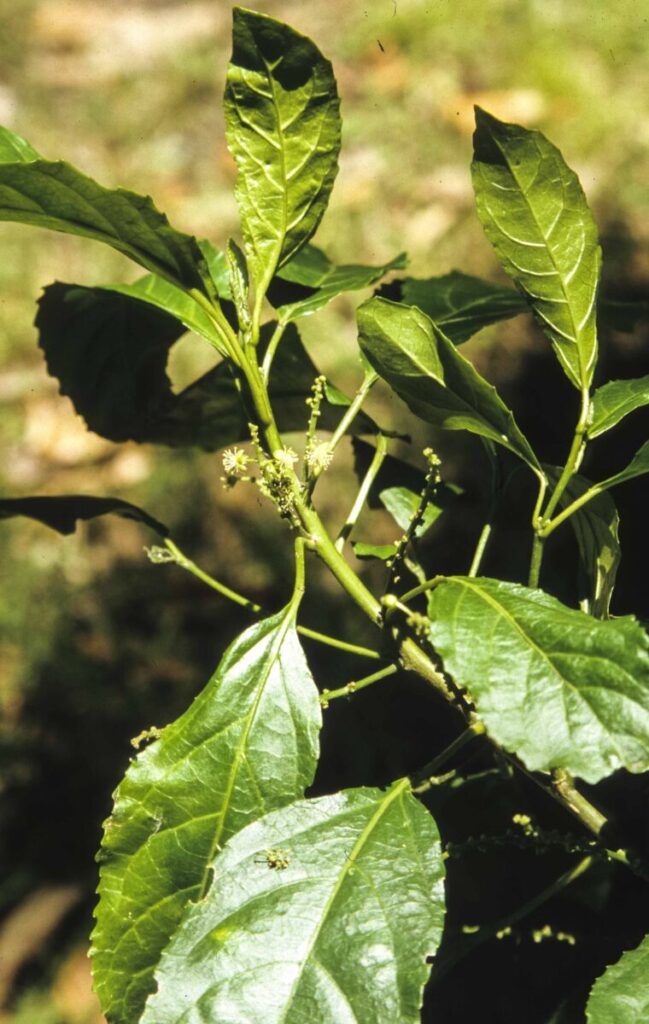
Claoxylon australe – A shrub or small tree growing to 9 metres in height with a trunk diameter of 30 cm. Grows in all types of eastern Australian rainforests. The natural range is from Eden in south eastern New South Wales to Bowen in tropical Queensland.
Clerodendrum tomentosum
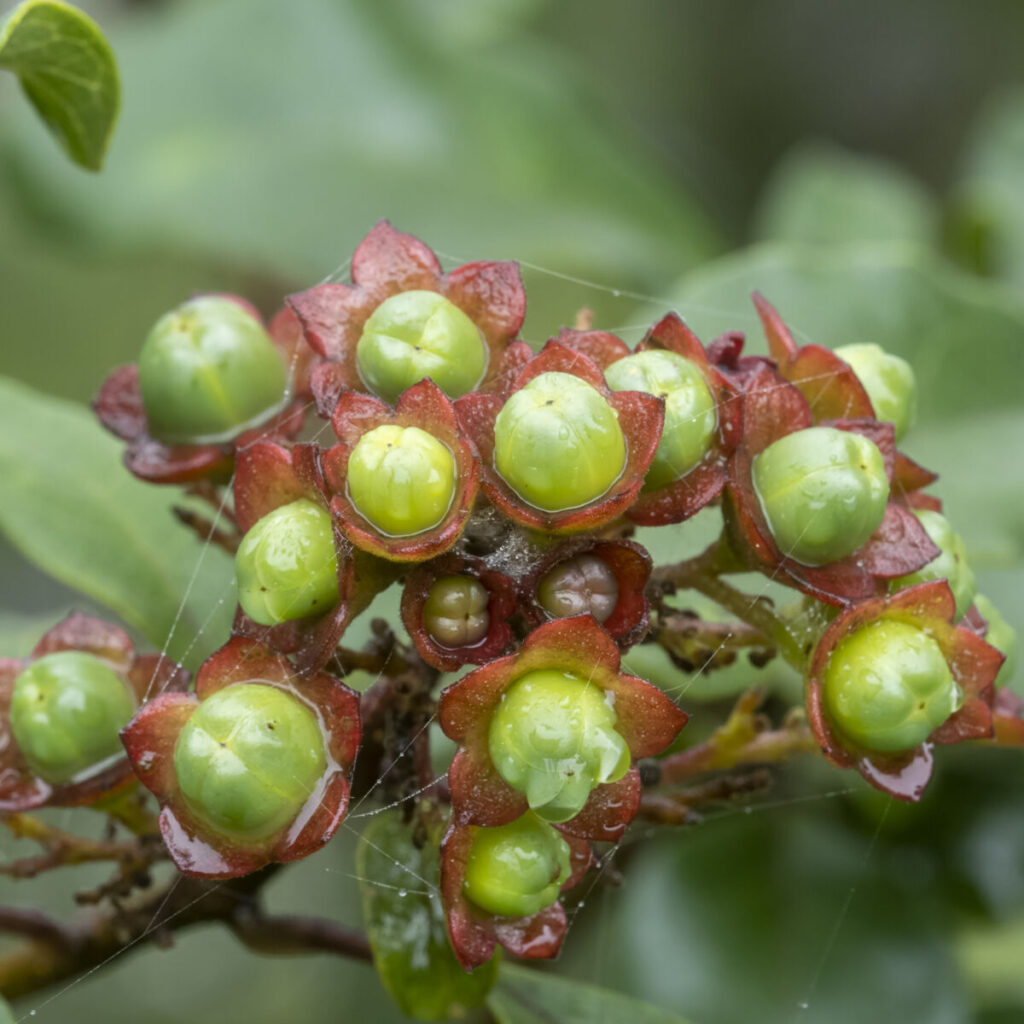
Clerodendrum tomentosum – A small tree, growing up to 10 m tall with a trunk diameter of 0.25 m, (though usually much smaller), from Batemans Bay in southern coastal New South Wales, extending mainly along the coast with some incursions into the central western slopes, into Queensland, Northern Territory, Western Australia, and New Guinea.
Citronella moorei

Citronella moorei – A large tree to 40 m tall. Easily identified in the rainforest by the extraordinary twisting and crooked trunk.
Banksia marginata
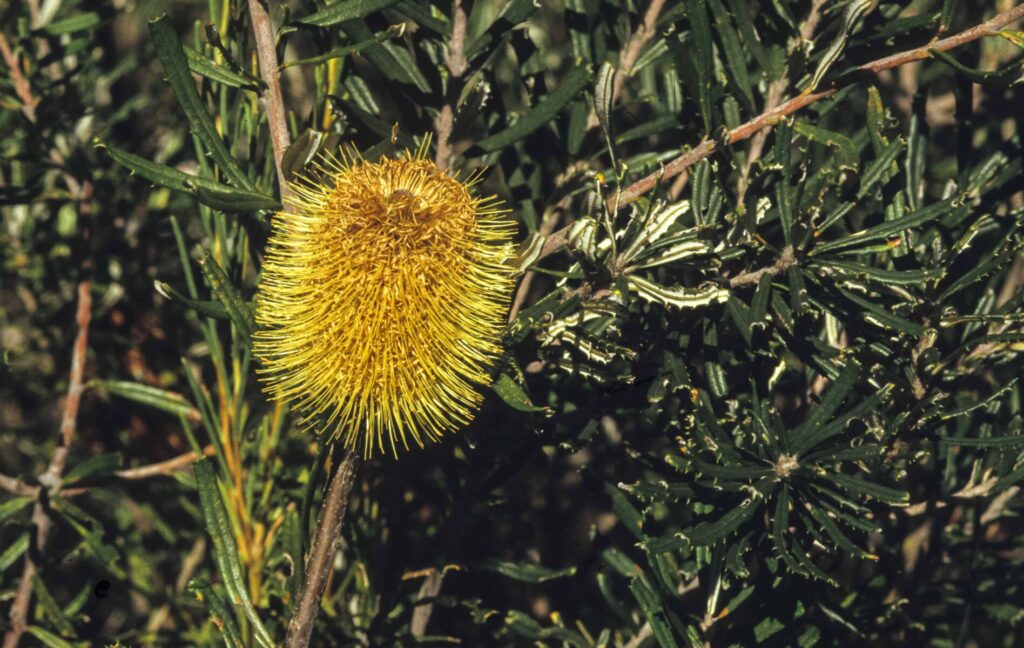
Banksia marginata – A shrub to tree, growing to 12 m tall with tessellated bark. It has a much wider distribution compared to other banksias…
Banksia ericifolia
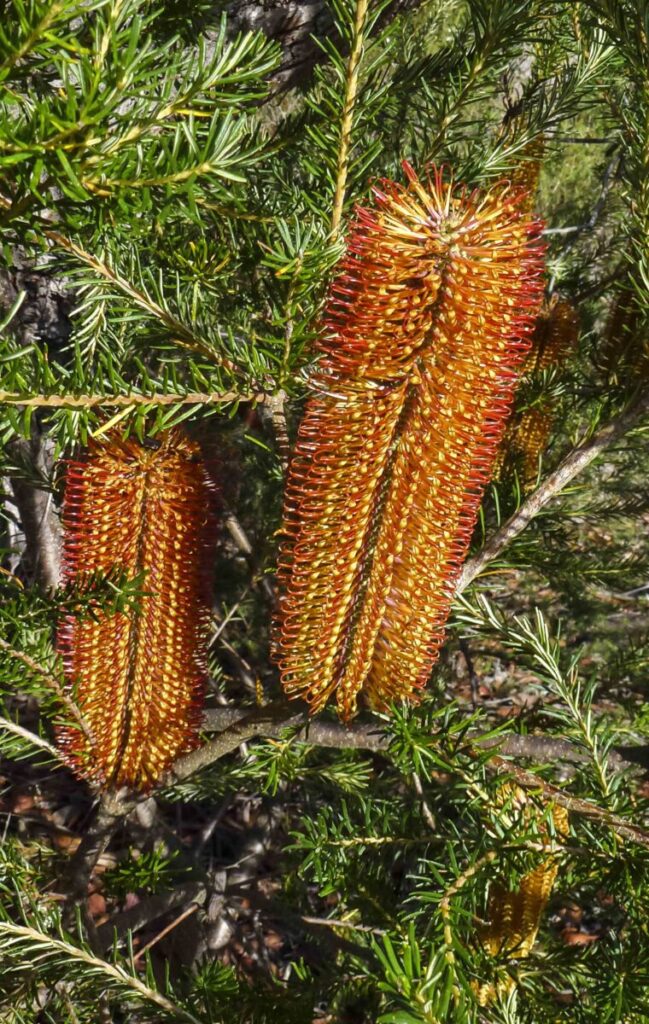
Banksia ericifolia – A bushy shrub to small tree capable of reaching 6 m tall and a spread to 4 m in the wild.
Banksia aemula
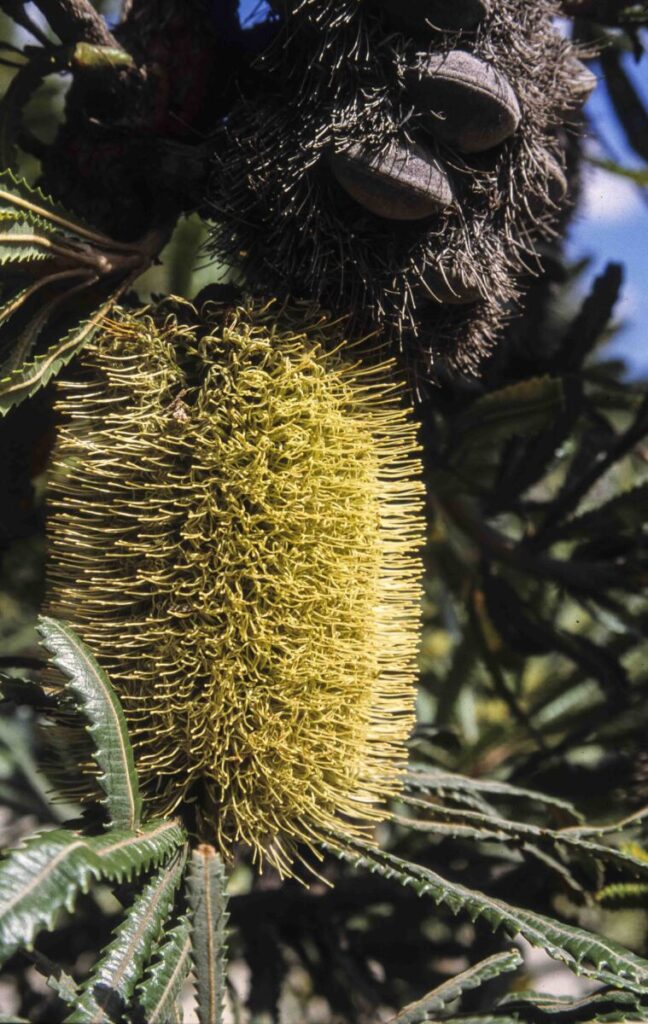
Banksia aemula – A tree capable of reaching 8 m tall with a canopy spread to 5 m in the wild.
Banksia integrifolia

Banksia integrifolia – A shrub to tree, growing to potentially 25 m with tessellated or fissured bark. It is found only on sandy soils, close to the beach on the coast as well as some inland sandy environments (eg: Warkworth Sands Woodland in the Hunter Valley).
Banksia serrata
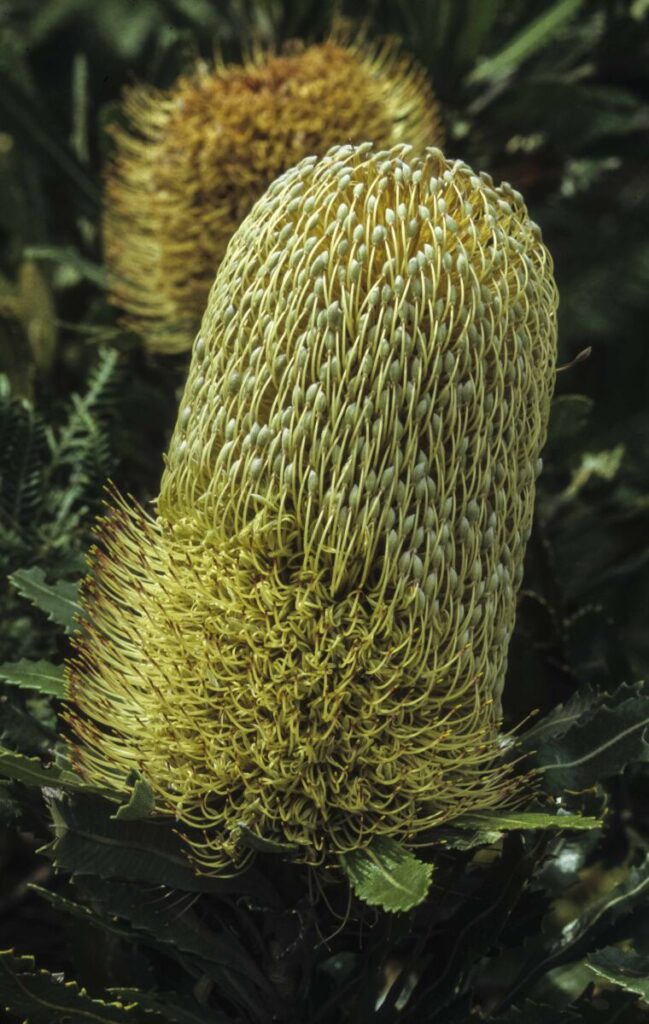
Banksia serrata – A tree capable of reaching 20 metres tall in the wild (although such trees will be old) and a canopy spread to 10 m. It is one of the iconic and easily identifiable banksias of the east coast of Australia.
Cinnamomum oliveri
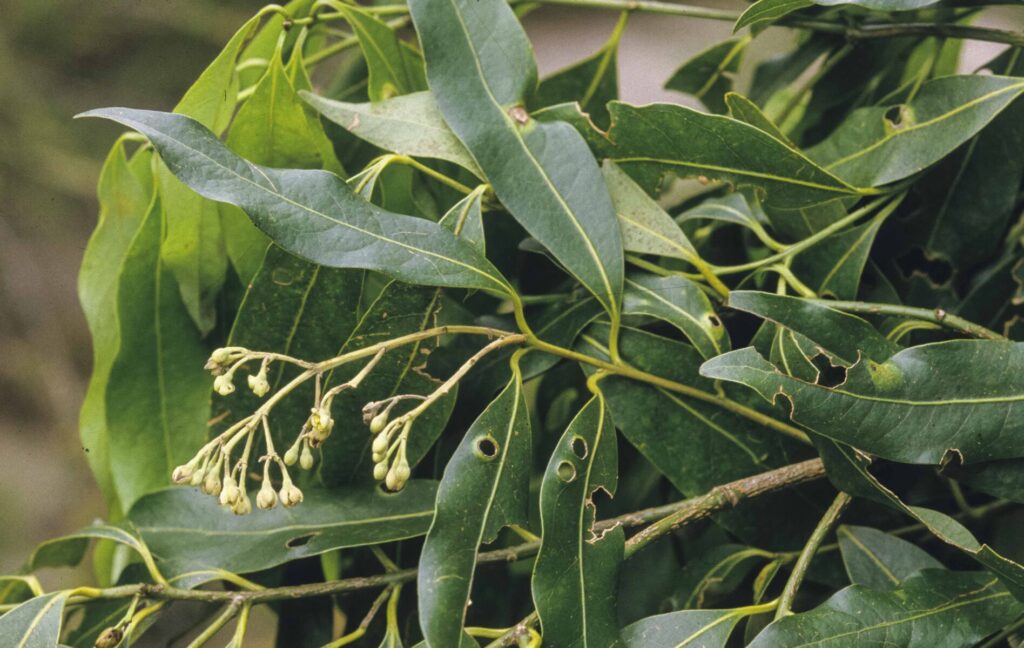
Cinnamomum oliveri – A rainforest tree growing to 30 m tall at the eastern coastal parts of Australia. It grows from the Illawarra district in New South Wales to Cape York Peninsula at the northern tip of Australia.
Alectryon subcinereus
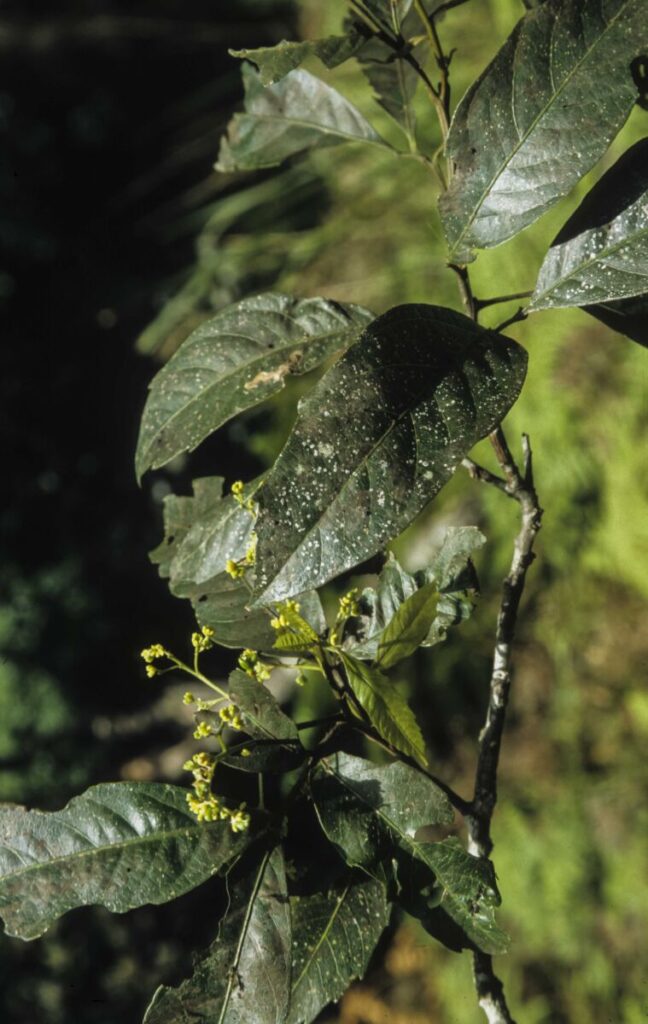
Alectryon subcinereus Is a small tree or shrub growing to 8 m tall and up to 6 m wide with branchlets and inflorescences finely hairy.
Alchornea ilicifolia
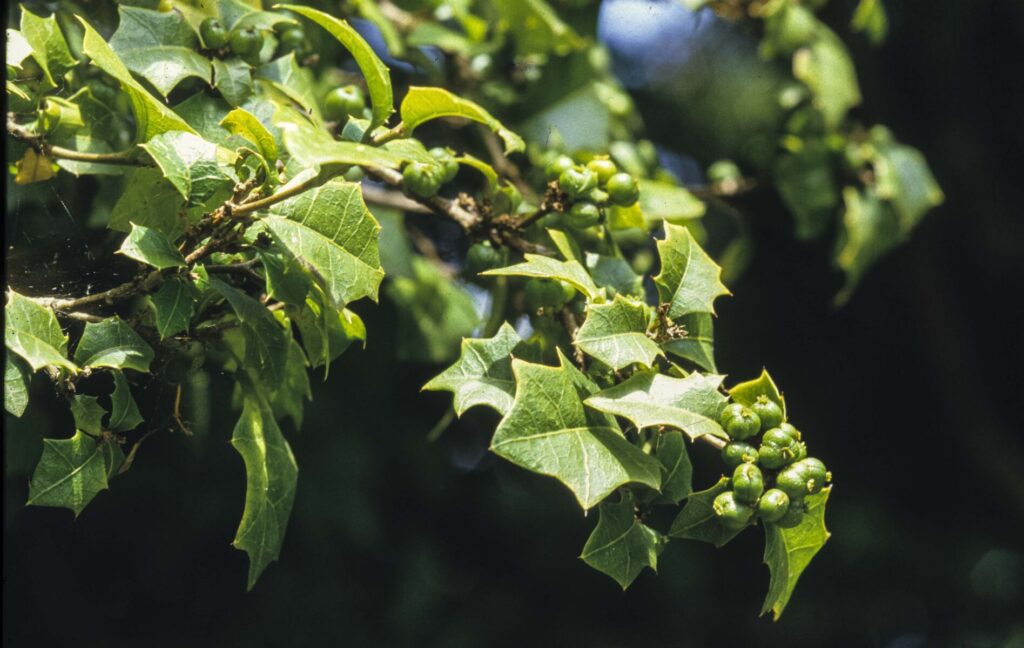
Alchornea ilicifolia – A small tree, to 6 metres tall. Found naturally in or on the edges of the drier rainforests; as far south as Jamberoo, New South Wales, north along the coast and extending west into the Hunter Valley, to Atherton in Queensland.
Acronychia oblongifolia
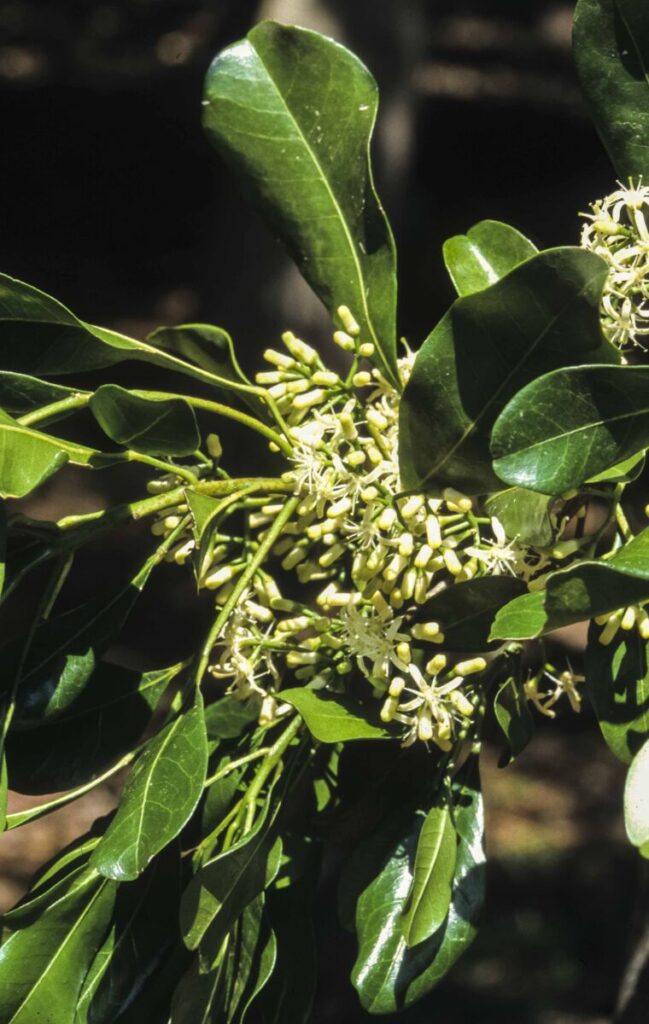
Acronychia oblongifolia – A tree growing to 25 m or so tall, from near Gympie in central-eastern Queensland, south through the extent of coastal New South Wales to a few rainforest communities in eastern Victoria. Its natural habitat is rainforest and rainforest margins.
Alphitonia excelsa
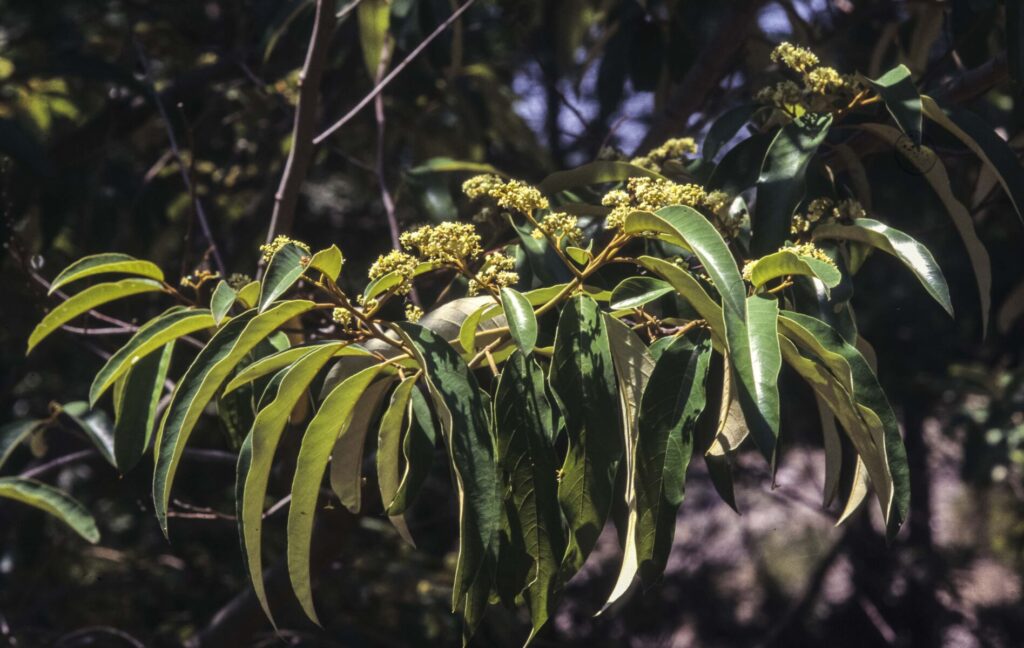
Alphitonia excelsa – A common tree, growing to 25 m and 5 to 10 m wide in dry eucalypt forest, as well as wet sclerophyll forests and rainforests in New South Wales, Queensland, Northern Territory and the north-eastern tip of Western Australia.
Waterhousea floribunda
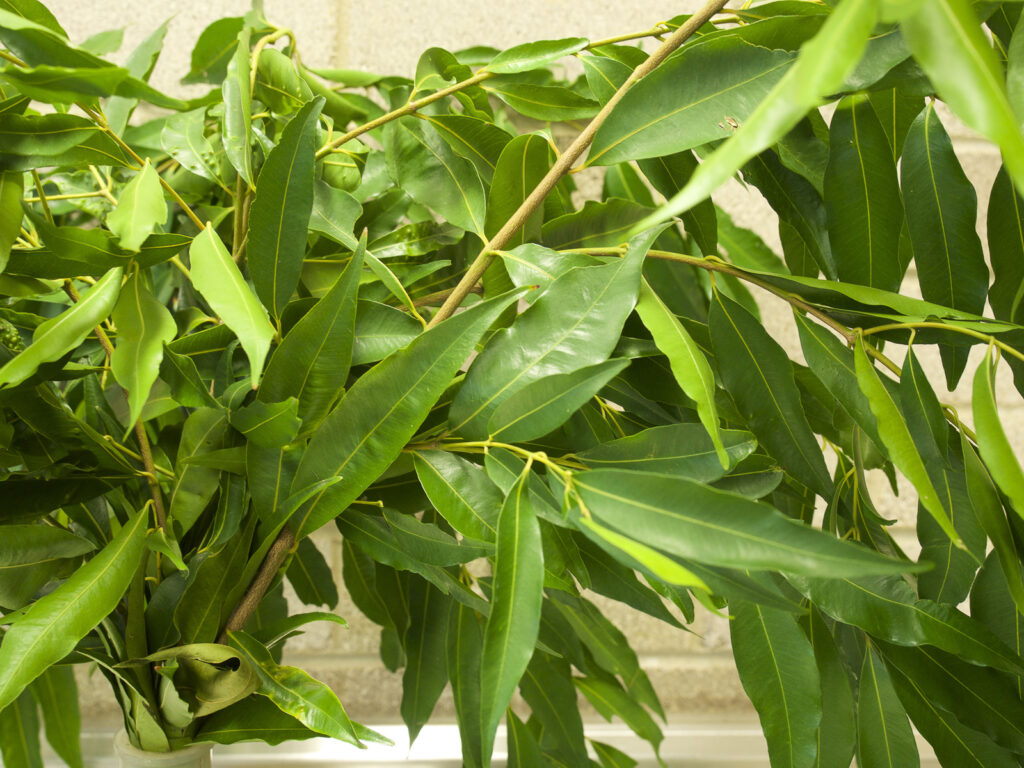
Waterhousea floribunda – A lilly-pilly tree, potentially reaching 30 metres in its native habitat, it is found in riverine rainforest, often close to streams, on the North Coast of NSW (north from and as far west as the Hunter Valley) extending along the coast into far northern Queensland (to around Cairns). This is only one species in NSW.
Syzygium oleosum
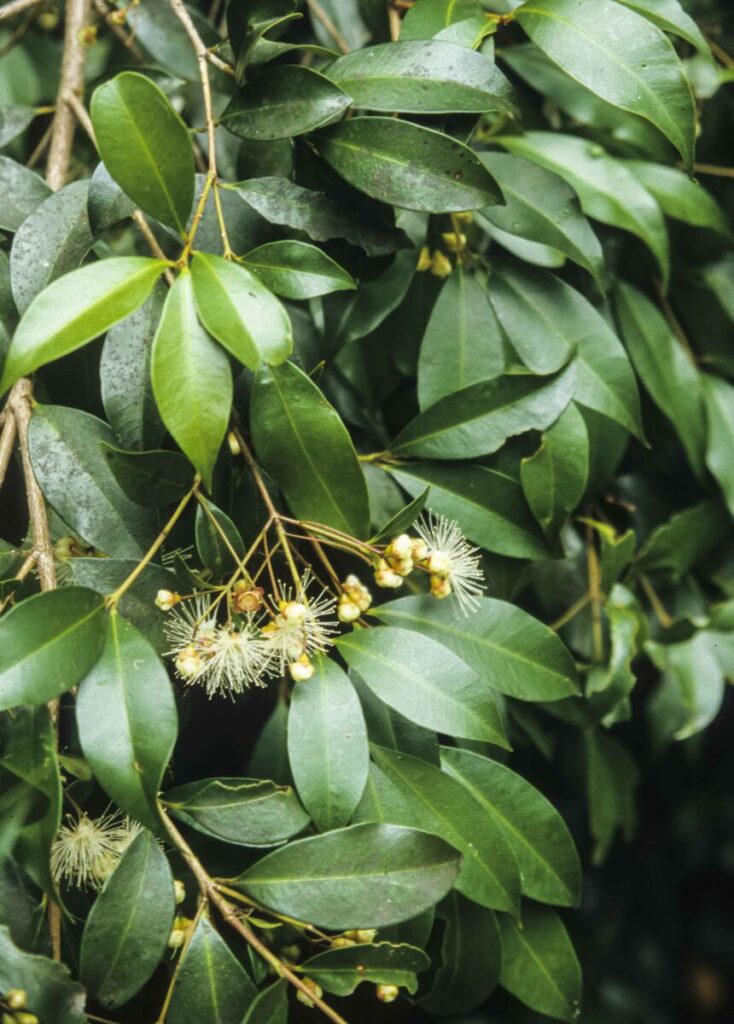
Syzygium oleosum is a shrub to medium tree, to about 10 – 15 m tall in its natural habitat. It grows along the coast of NSW, in subtropical, warm temperate and littoral rainforest. Found from north of Port Kembla in NSW, north along the entire NSW coast, into Queensland to the far north.
Xanthostemon chrysanthus
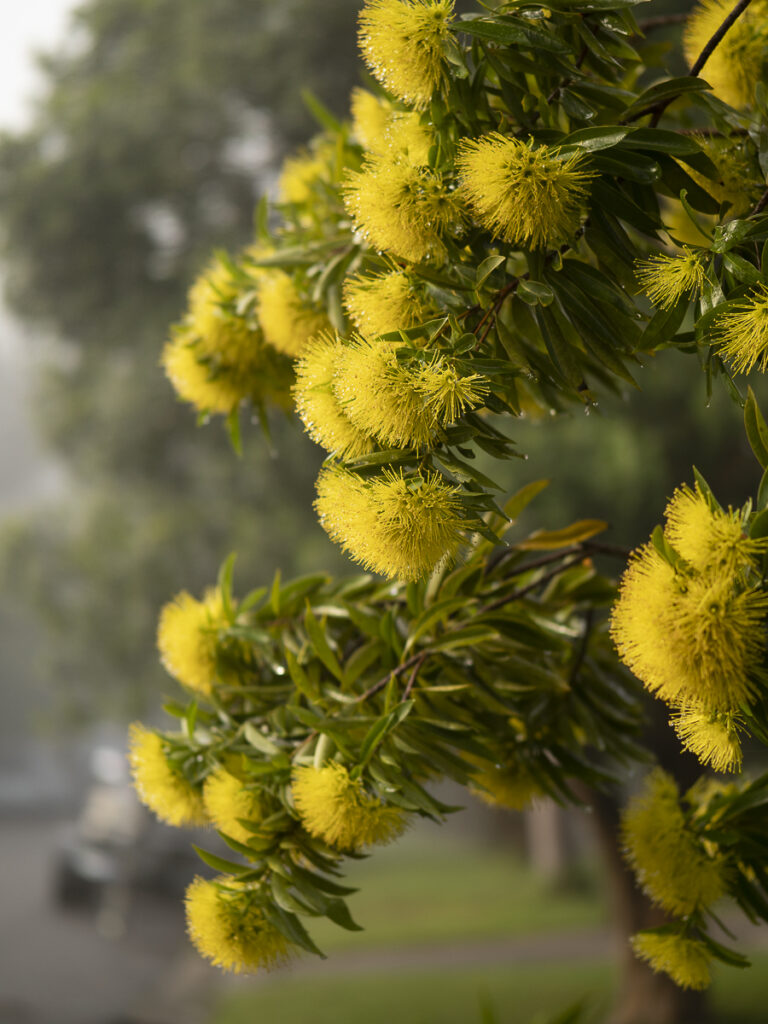
Xanthostemon chrysanthus is a a very commonly planted tree, reaching 20 metres tall in its natural habitat. It is endemic to far northern Queensland, from Townsville to Cape York, forming part of tropical rainforest vegetation.
Tristaniopsis laurina
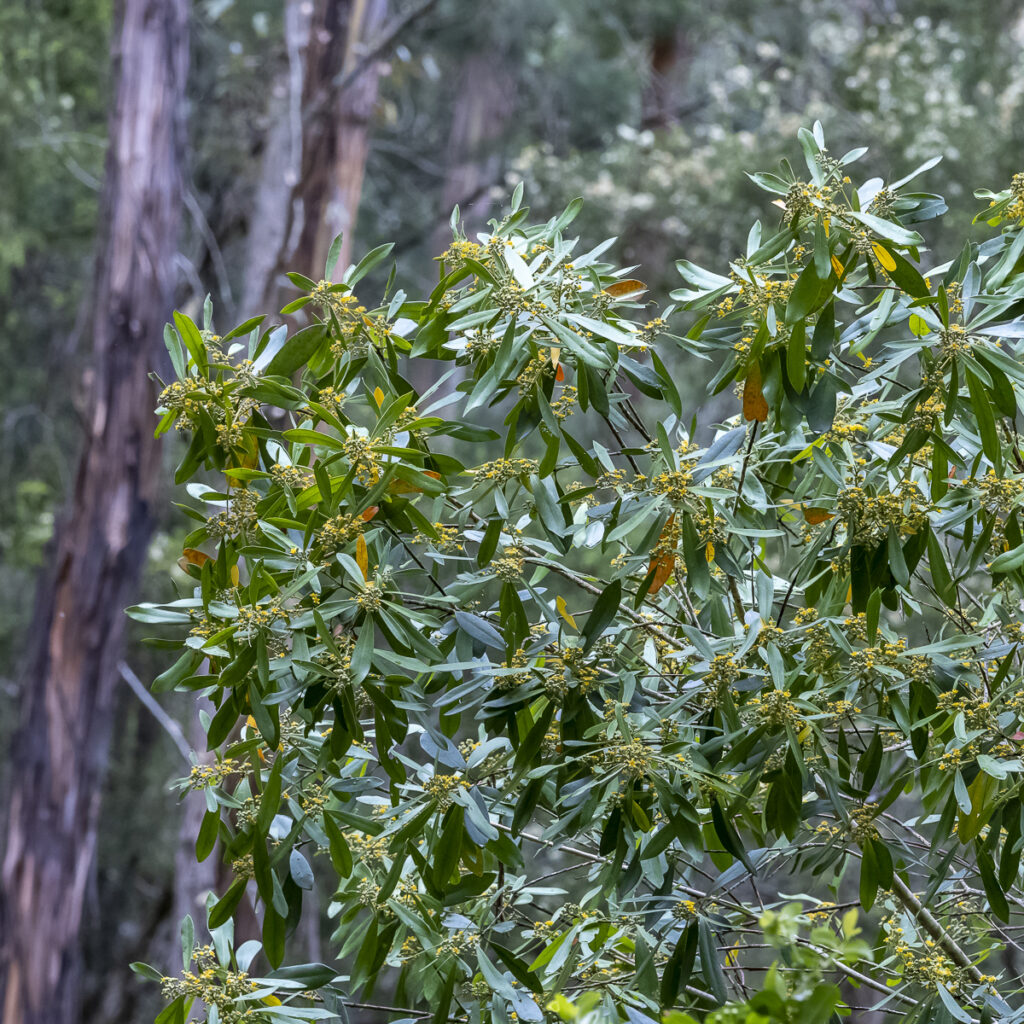
Tristaniopsis laurina – A very commonly planted tree, reaching 30 metres tall in its natural habitat. It has smooth brown-grey mottled bark. It grows naturally along most of the entire coast of NSW
Syzygium luehmannii
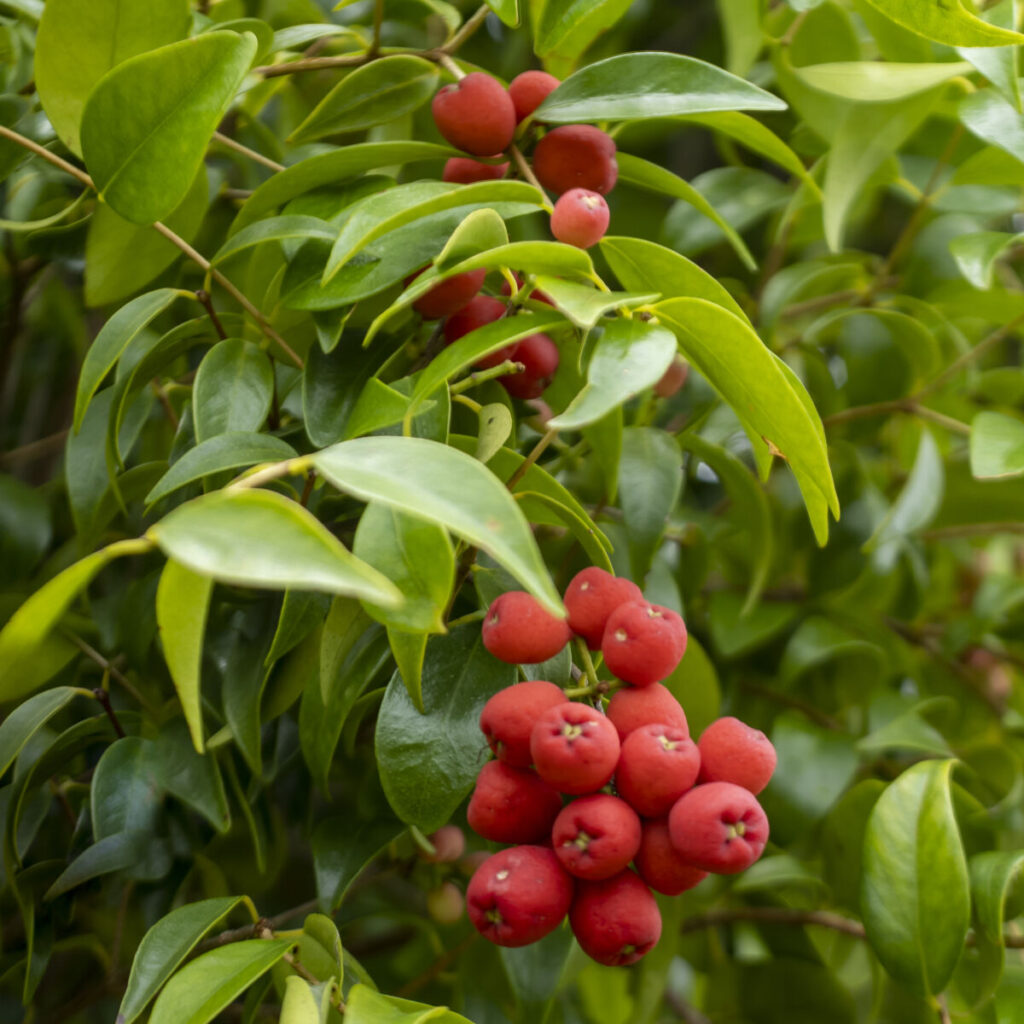
Syzygium luehmannii – A medium-sized to large lilly pilly, potentially with large buttresses, growing to 30 metres tall in its natural habitat. It grows is restricted to the North Coast of NSW, growing in coastal subtropical and littoral rainforest, north of Kempsey. Extends into south-east Queensland.
Syzygium paniculatum
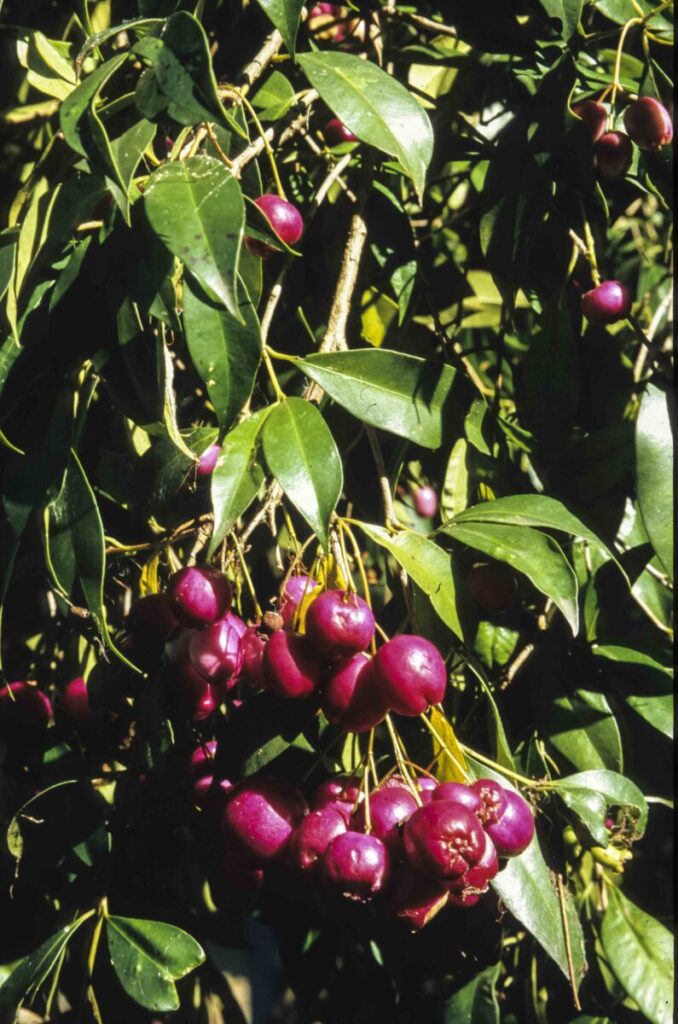
Syzygium paniculatum – A shrub to medium tree, to about 15 – 20 m tall in its natural habitat. It grows along the coast of NSW, in subtropical and littoral rainforest, as well as sand dunes behind the beach. Found from generally north of Jervis Bay to about Buladelah.
Syzygium australe
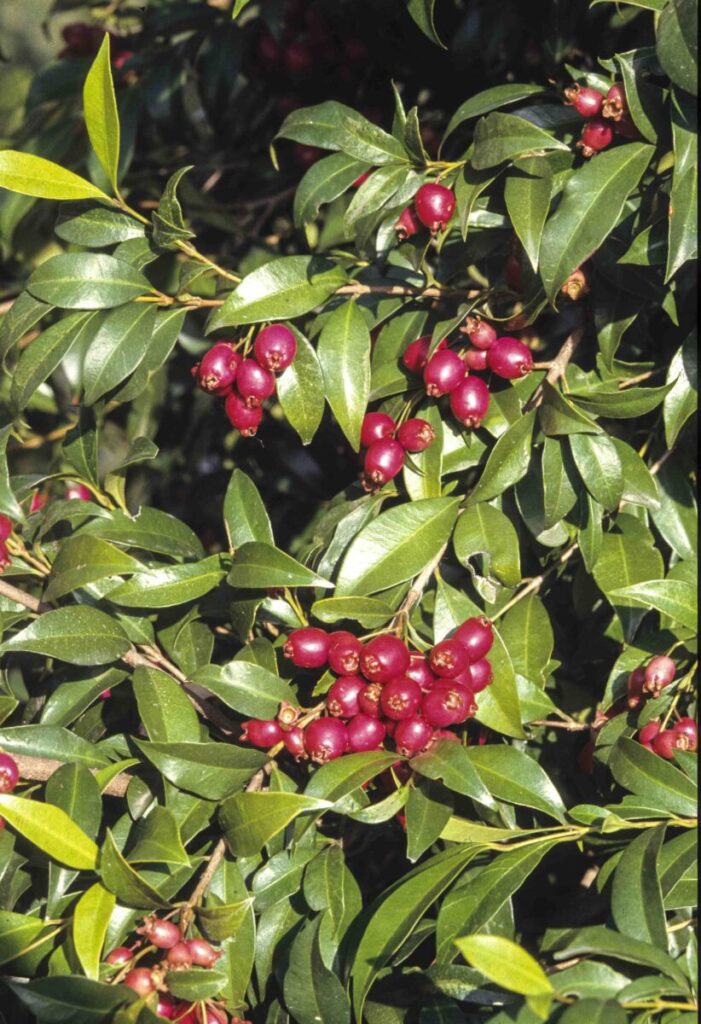
Syzygium australe – A shrub to small tree, to about 10 m tall in its natural habitat. It grows along the coast of NSW, north of Batemans Bay, in warmer rainforest, often near streams. Extends into Qld, along the coast, up to around Cairns.
Backhousia myrtifolia
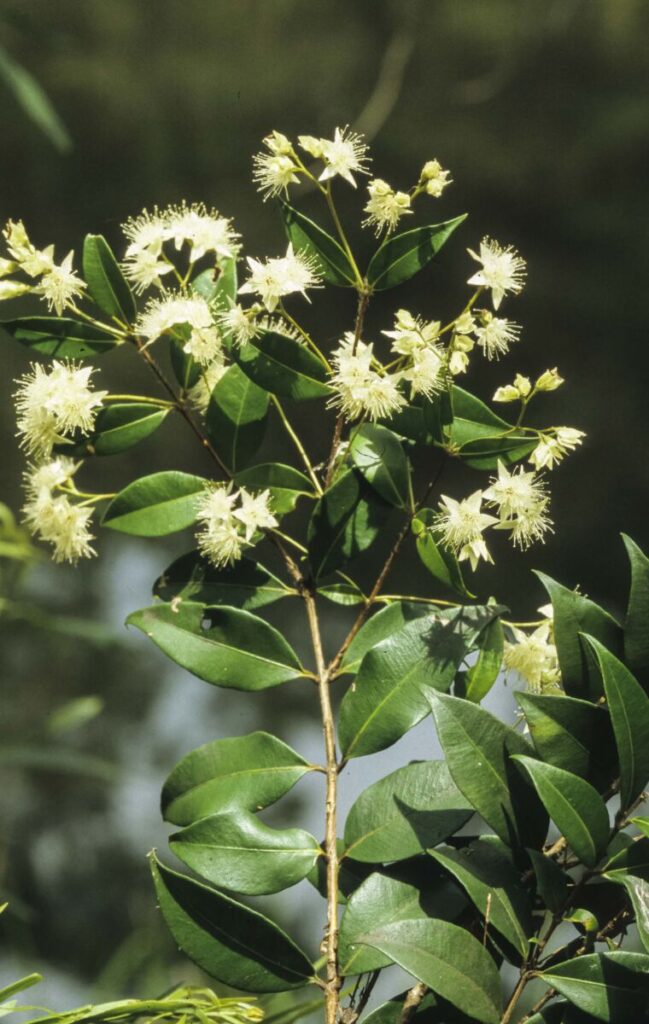
Backhousia myrtifolia – An attractive shrub or tree-myrtle, reaching 30 metres tall. It has a general lilly-pilly appearance. Can spread to 10 m wide or more. The bark is brown with finely flaky bark.
Acmena smithii
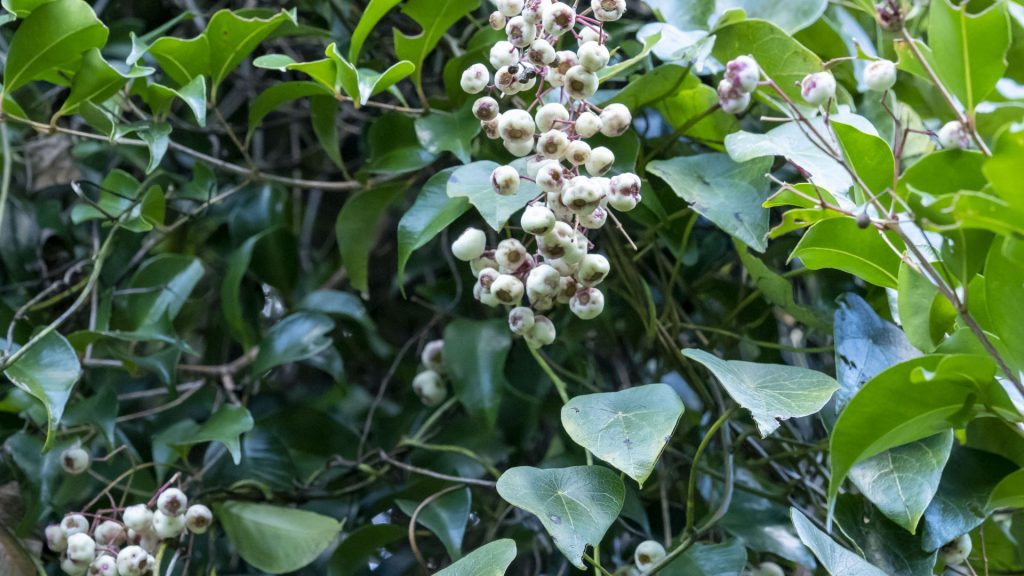
Acmena smithii – An attractive shrub or tree-myrtle, reaching 30 metres tall. It has a general lilly pilly appearance. Can spread to 10 m wide or more.
Anetholea anisata
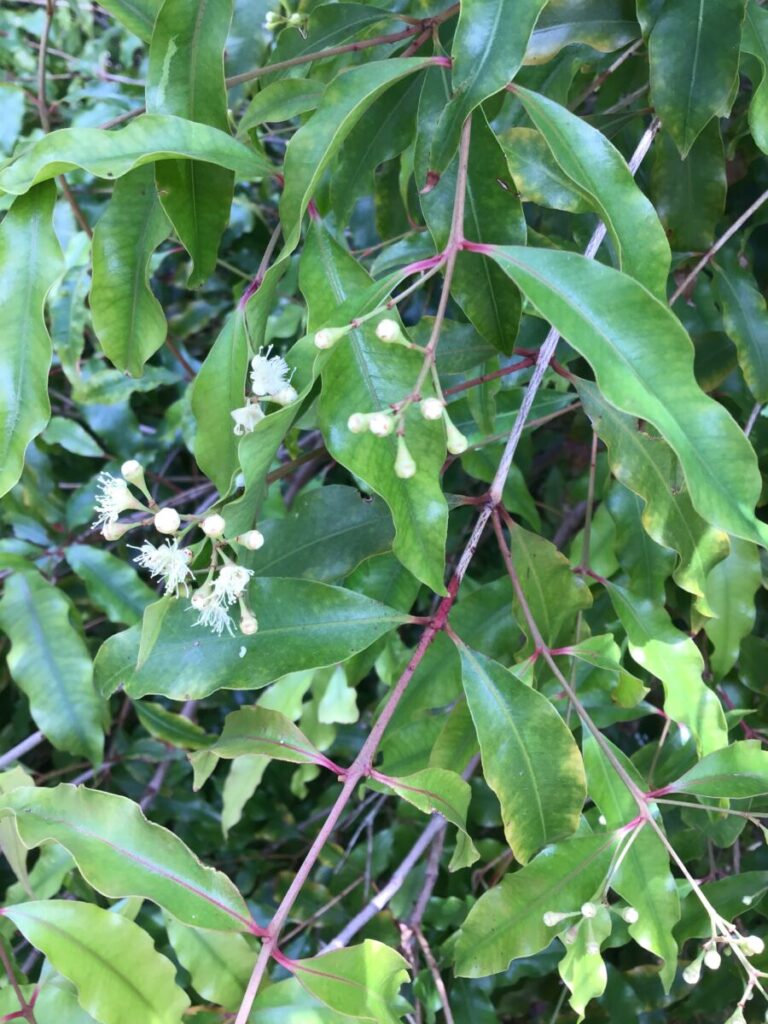
Anetholea anisata – An attractive tree-myrtle, reaching 30 metres tall. It has a general lilly-pilly appearance. Can spread to 10 m wide or more.
The bark is brown and corky.
Acacia pravissima
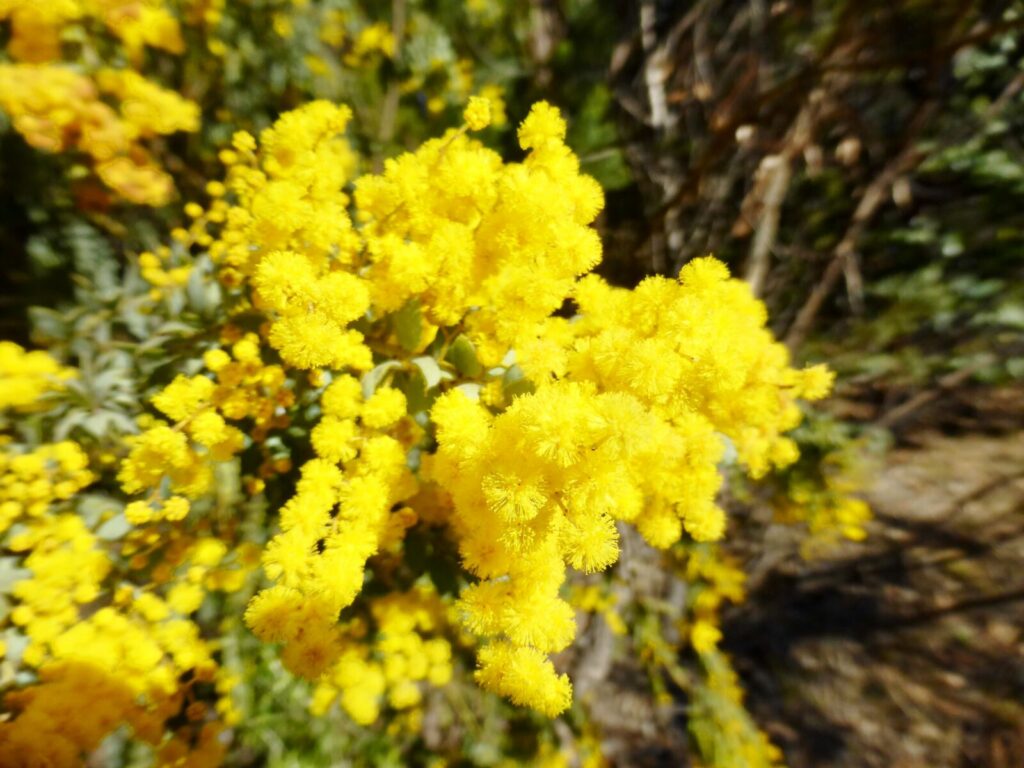
Acacia pravissima is a tree growing to 8 m tall and potentially 5 m wide, it grows in sclerophyll forests and woodland, in clays and sandy loams on riverbanks, hillslopes and ridges. It grows on the southern tablelands and western slopes of NSW, south from the ACT, extending into Victoria.
Acacia cognata
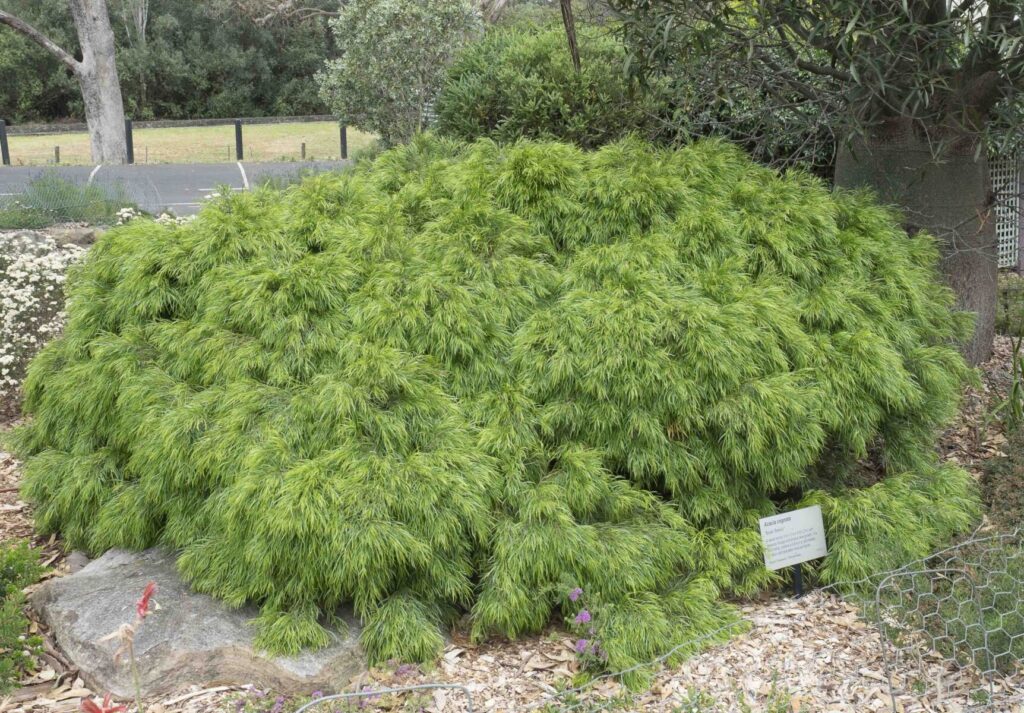
Acacia cognata is an erect or spreading tree or shrub to 10 m tall, it is found in dry sclerophyll forest and woodland, in sandstone and granite-derived soils, generally south from Nowra in NSW, with most of its extent concentrated on the south coast subdivision, extending into the southern tablelands.
Acacia stricta
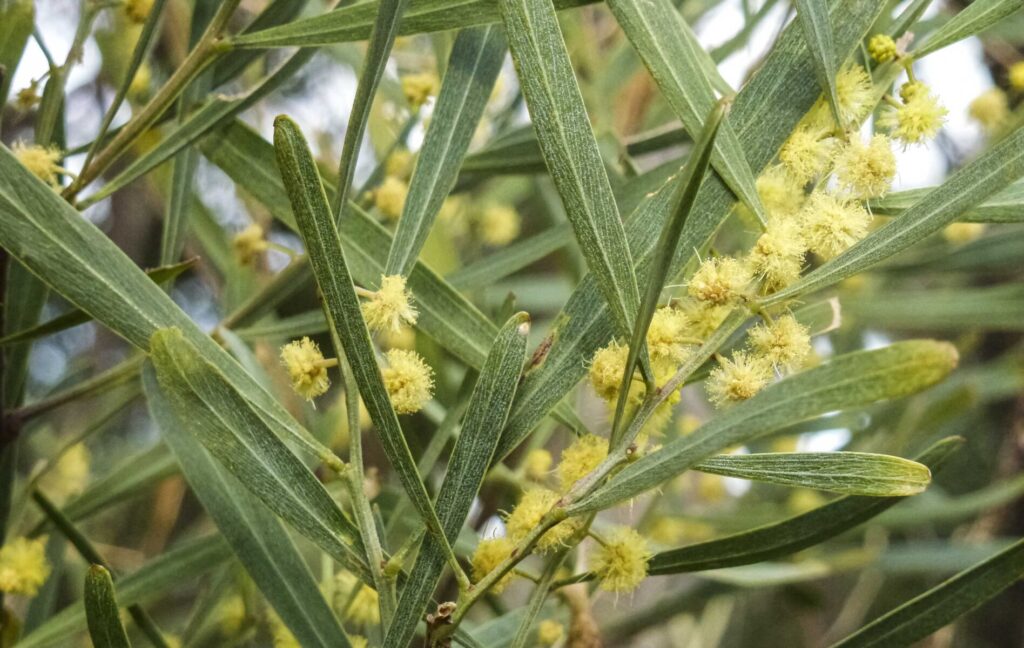
Acacia stricta is an erect or spreading tree to 6 m tall. It is found in wet and dry sclerophyll forest, woodlands and heath, on a range of soils. It grows all along the NSW coastal and tablelands subdivisions, extending into the south western slopes, and is also in Qld, Vic, Tas and SA.
Acacia obtusifolia
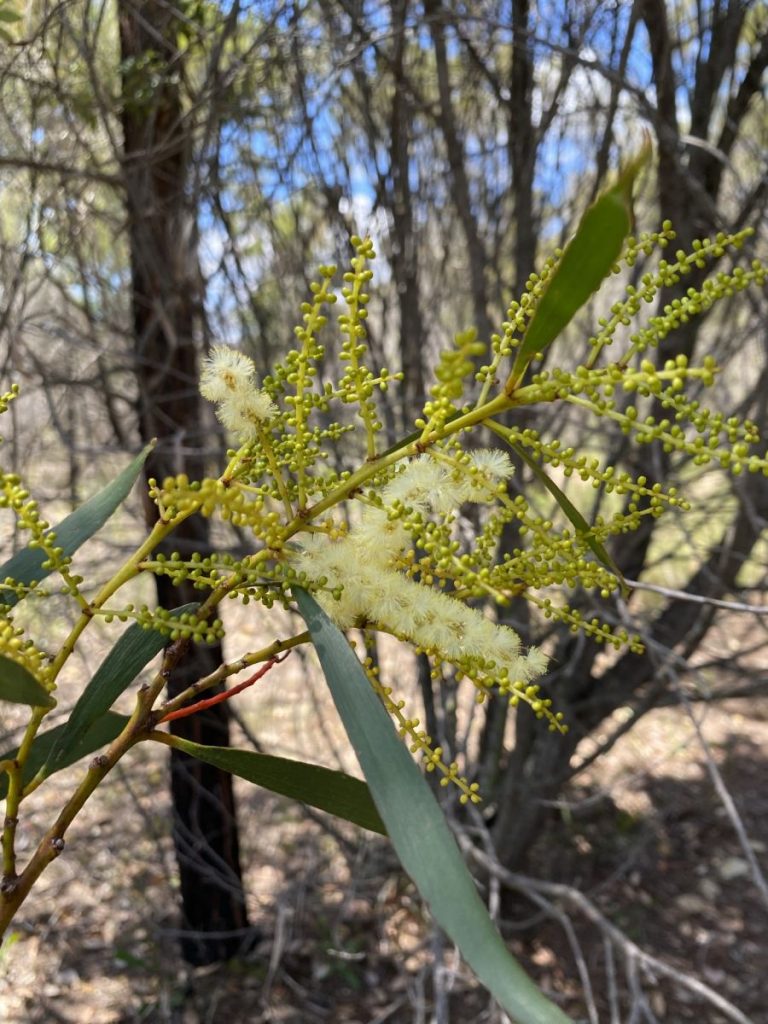
Acacia obtusifolia – grows to a large-shrub or small tree, to 8 m high, usually on sandy and sandstone substrates but also on basalt. It grows in wet and dry sclerophyll forest and margins of rainforest, woodland and heath…
Acacia fulva
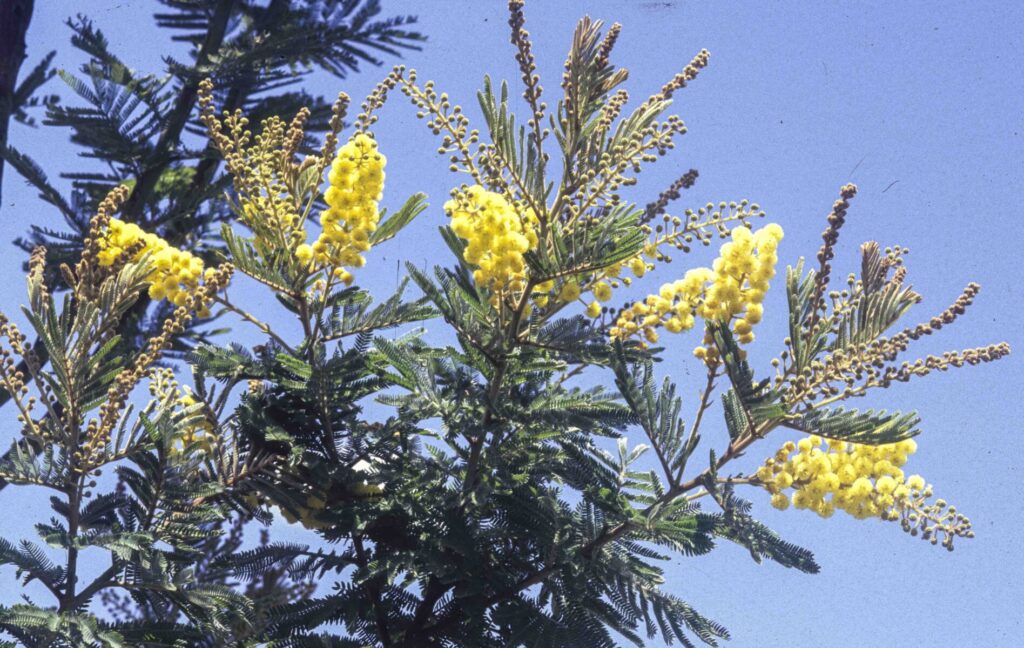
Acacia fulva rows as a shrub or tree to 15 m tall, with smooth bark. It has a limited distribution and considered rare, with few records databased, near the Gloucester Bucketts, to Mt Yengo in Howes Valley, near the junction of the Central Coast and North Coast subdivisions, of NSW.
Acacia howittii
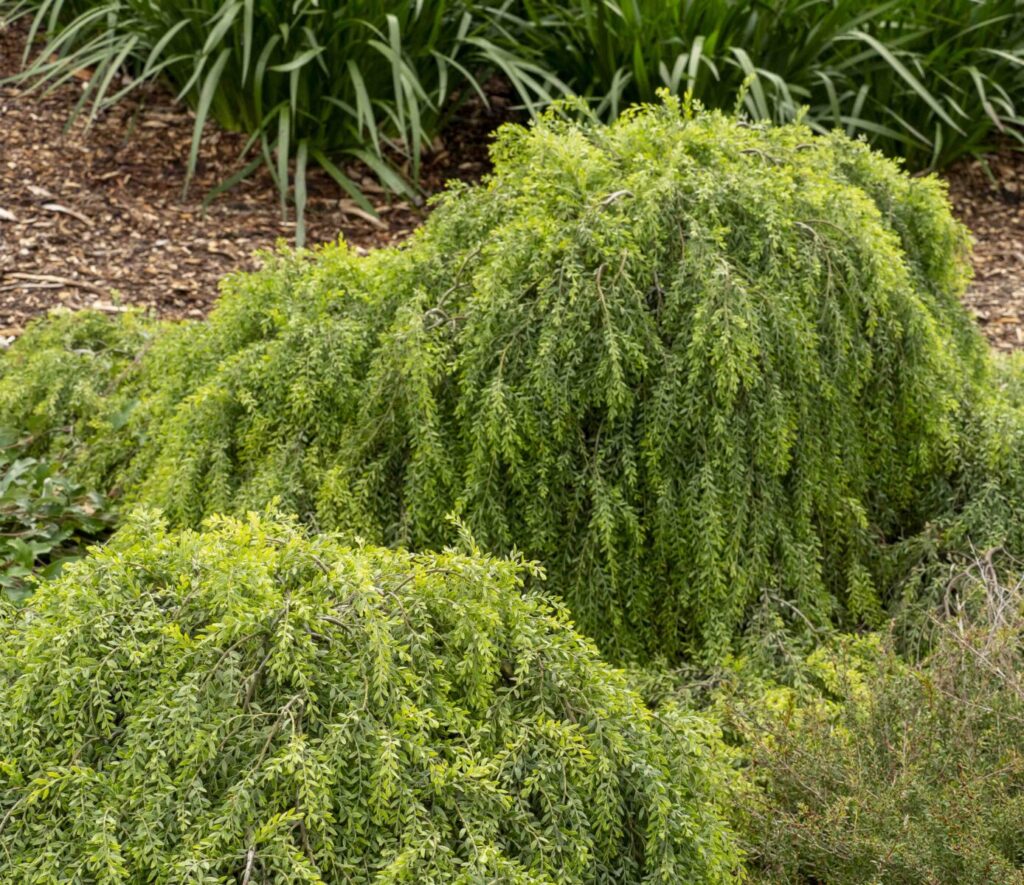
Acacia howittii is a potential tree growing to 9 m tall and potentially 5 m wide, it is naturally restricted to Victoria, growing in the southern Gippsland hills, between Yarram and Tarra Valley.
Acacia penninervis
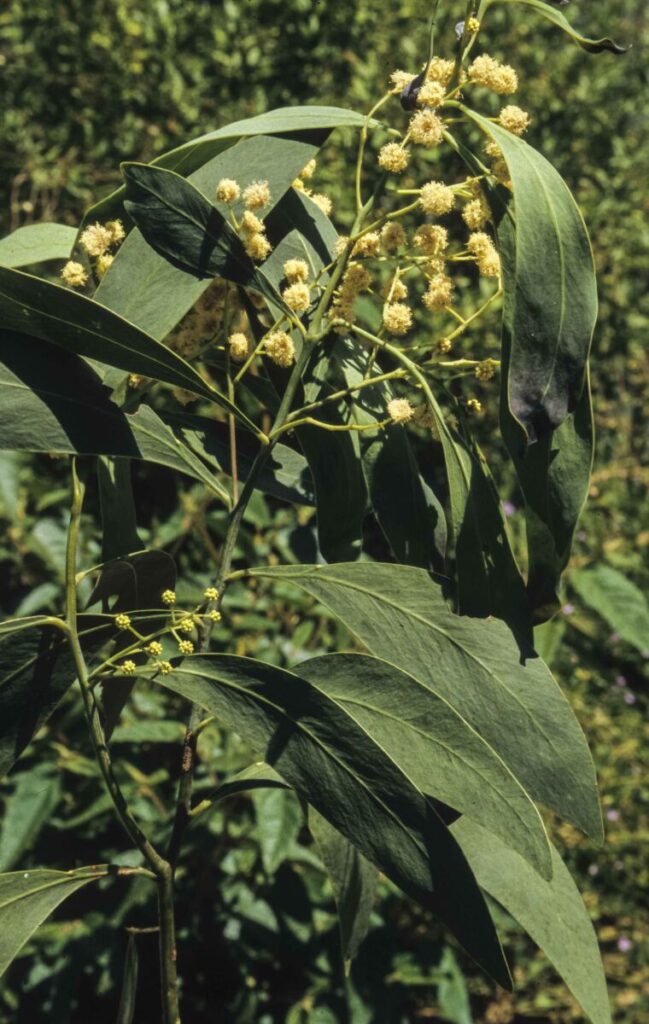
Acacia penninervis is a variable plant, growing to 8 m tall. Widespread, especially in inland areas of Victoria, ACT and NSW. It grows with the entire NSW coastal and tablelands subdivisions, as well as the central and north western slopes and into the north far western plains. Also into Qld and Vic.
It is typically found in moist and dry sclerophyll forest and woodland.
